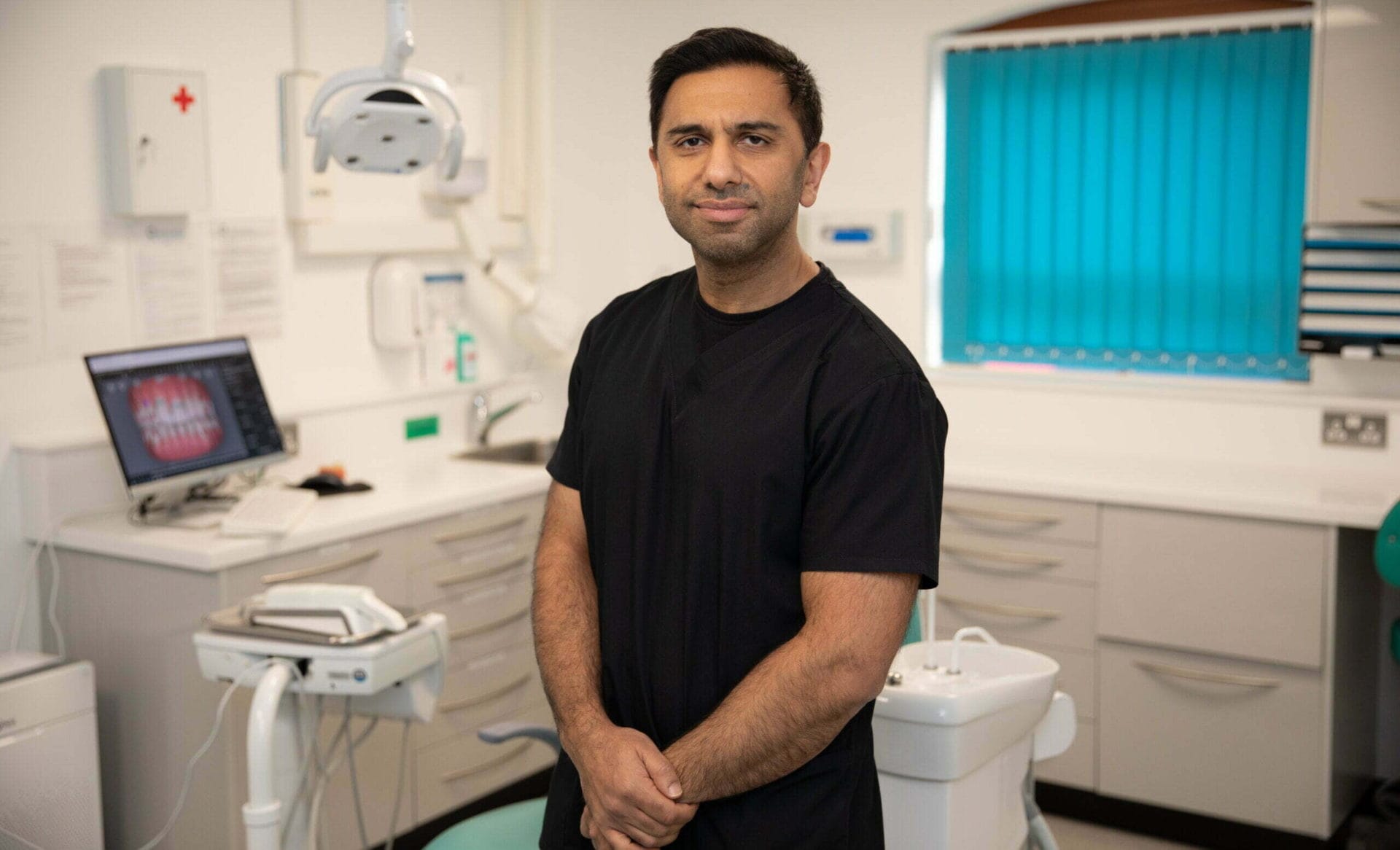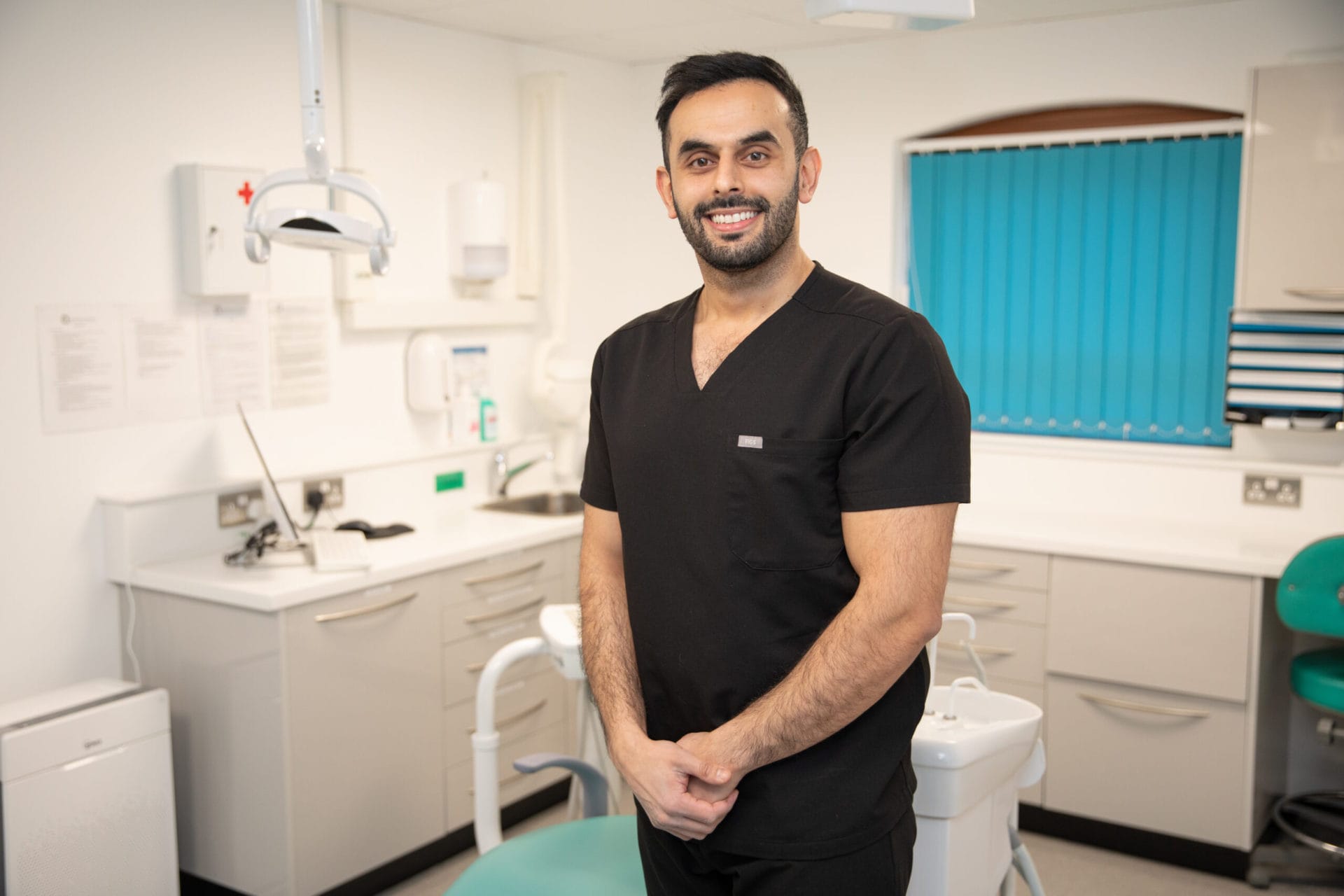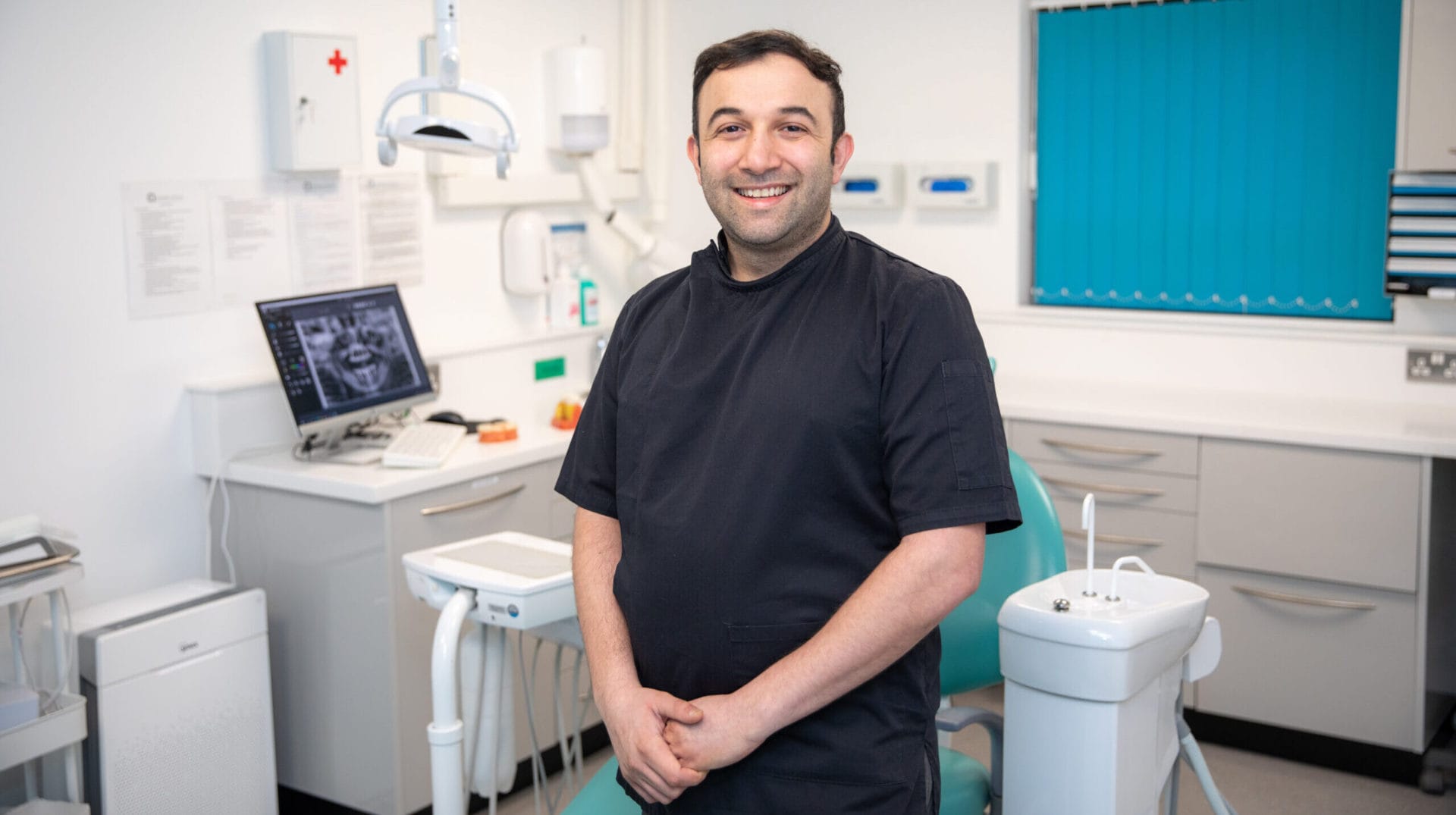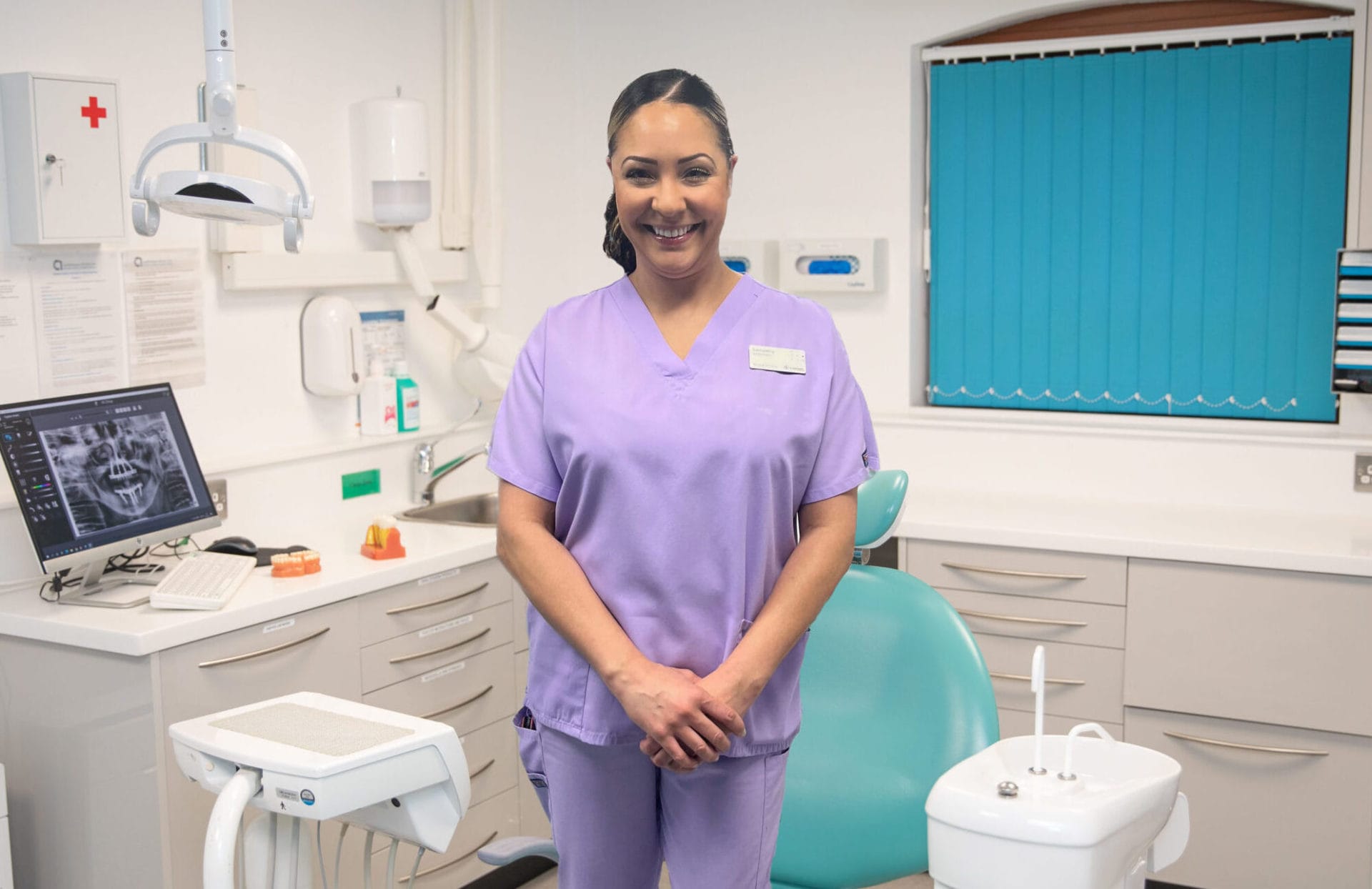Porcelain inlays in Leeds
Our porcelain inlays in Leeds are custom-crafted to match your natural teeth, offering a durable and seamless solution for damaged teeth. You deserve a smile you’re proud of – trust our years of expertise and book your consultation today.
- Precise
- Protective
- Strong

Porcelain inlays - quick overview
- Custom-Fitted for Precision
- Stronger Than Fillings
- Blends with Natural Teeth
- Protects & Strengthens
- Long-Lasting Solution
What are porcelain inlays?
Porcelain inlays are a straightforward, effective solution for repairing damaged or decayed teeth. They are custom-crafted to fit precisely into a tooth, restoring its original shape and function. Made from high-quality porcelain, these inlays match the natural colour of your teeth and offer durability against wear and staining.

Main features of our porcelain inlays
Designed to fit perfectly within your tooth for a seamless and secure restoration.
More durable and resistant to wear compared to traditional composite fillings.
Helps restore damaged teeth while preserving as much natural structure as possible.
With proper care, porcelain inlays can provide years of reliable protection.
The process of getting porcelain inlays

Preparation
First, we’ll remove any decay or old fillings from the tooth and give it a thorough clean. This step ensures a healthy foundation for your inlay.

Impression
We then take an impression of your tooth. This impression is sent off to a dental lab, where your inlay is custom-made to fit your tooth’s exact shape and size.

Temporary protection
While your inlay is being crafted, we’ll fit a temporary restoration over your tooth. This protects the prepared area and keeps you comfortable in the meantime.
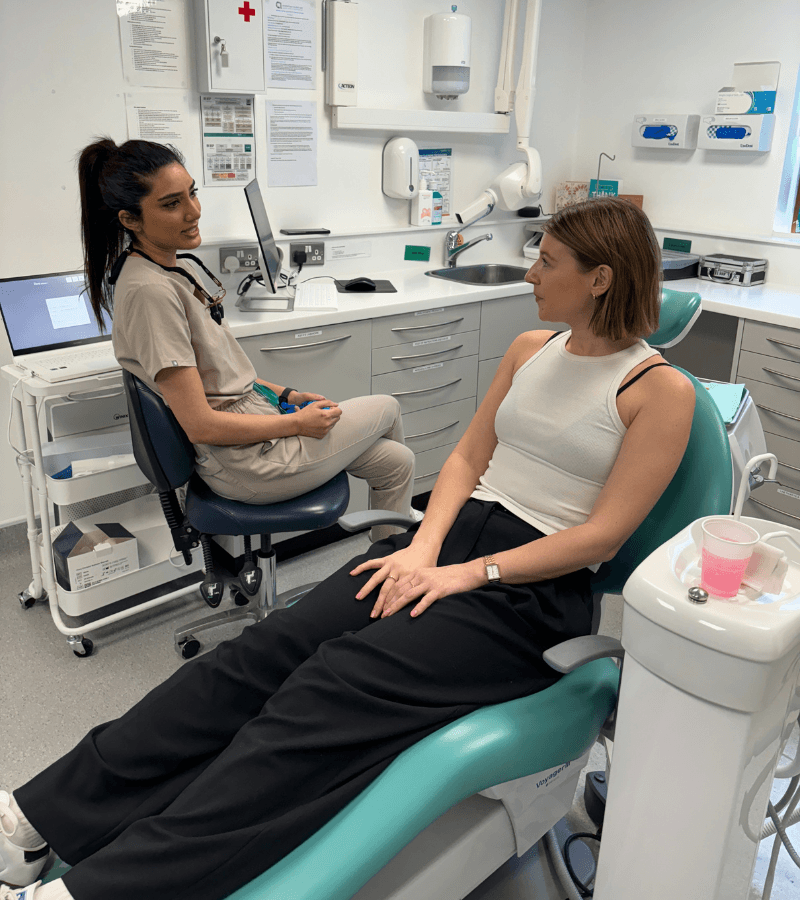
Fitting
Once your porcelain inlay is ready, you’ll come back in. We’ll check the fit and make sure it feels comfortable and looks right. If everything’s good to go, we’ll place it with a strong dental adhesive.
Why choose Aesthetique for porcelain inlays?
Our dedication to your comfort, satisfaction, and dental health drives everything we do. Here’s why we’re the go-to choice for porcelain inlays in Leeds:
- Tailored care to meet your specific needs and comfort.
- Cutting-edge technology ensures the best outcomes with minimal discomfort.
- A welcoming and relaxed atmosphere from the moment you arrive.
- High-quality porcelain for beautiful inlays that last for years to come.
- Years of experience in providing porcelain inlay treatments.
- Clear, transparent communication about your options, procedures, and expectations.
Frequently Asked Questions
Have questions about porcelain inlays in Leeds? Check our most common ones here or give us a call if you can’t find what you need.

Protect your smile with Aesthetique
Enhance and protect your smile with porcelain inlays at Aesthetique. Designed for a precise fit, they offer a stronger, longer-lasting alternative to fillings while blending seamlessly with your natural teeth. Book your consultation today at Aesthetique Dental Care.
Trusted by patients in Leeds


How do I look for my porcelain inlays?
Caring for your porcelain inlays is straightforward and similar to looking after your natural teeth. Brush twice a day with fluoride toothpaste, floss daily, and make regular visits to your dentist for check-ups and cleanings. It’s also wise to avoid biting down on hard foods or ice to prevent any damage. With these simple steps, you can ensure your inlays last a long time, keeping your smile bright and healthy.
How long do porcelain inlays last?
Porcelain inlays are designed for longevity and can last anywhere from 5 to 20 years, depending on the material used and how well they are cared for. Factors like your oral hygiene habits, the foods you eat, and regular dental check-ups play a big role in their lifespan. With proper care, including good oral hygiene and avoiding hard and sticky foods, your inlays and onlays can serve you well for many years.
